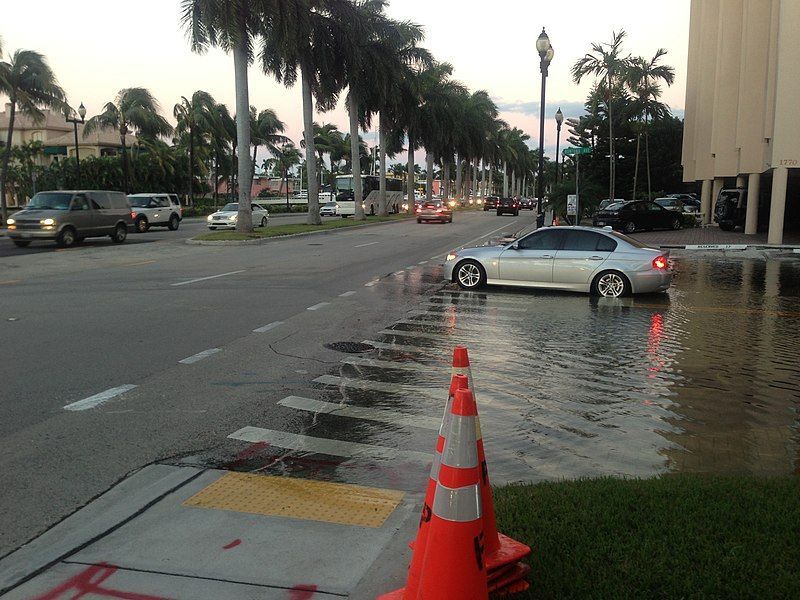Blog
Media Contact
Email: media@floodpanel.com

Is Florida Planning Wisely for Rising Sea Level?
Credit: FloydPhoto/Wikimedia Commons
Flooding in Miami and the Florida Keys was once an occasional, if very inconvenient headache. But in recent years, flooding has become a regular and increasingly frequent fact of life — one that challenges communities throughout the state.
This Thursday, May 2, 2013 file photo shows flooding on Duval Street in Key West, Fla. after roughly five inches of rainfall. In many sea level projections for the coming century, the Keys, Miami and much of southern Florida partially sink beneath potential waves. (AP Photo/The Key West Citizen, Rob O’Neal)
Studies have shown that the coastal areas of Florida have conceded about nine inches of land to the ocean over the past 100 years. However, that pace has accelerated, and it is predicted that the same coastline will lose 9 to 24 inches in the next 50 years. This is particularly alarming when one considers that many important features of the area’s infrastructure sits a mere 2-5 feet above sea level!
A full 40% of the flood risk zones in the US can be found in the state of Florida. Flood maps that project risk during the coming decades indicate a frightening future for the state, with much of the coastline underwater in as few as 30 years. Some maps show an alarming new shape for the future State of Florida, with as much as a third of the state submerged — all the way up to Fort Lauderdale!
Recent large storms such as Hurricane Sandy in 2012 and Hurricane Wilma in 2005 provided a wake-up call to citizens and developers. These storm events were a sneak preview of what certainly lies ahead for Florida. Each year there is a shrinkage of beaches and watersheds, and the oceanfront creeps closer. Global sea level rise means that the storm surges of today are much more destructive and powerful than ever before.
At the present time, there is no official, coordinated plan to save or protect Florida’s coastline. When new developments are planned, no one knows if the construction will be protected by public works projects in the future, or if the land that is being built upon will be underwater in the coming years. Currently, new projects tend to be planned with flooding in mind, using elevation of the lot, natural flood barriers, or integrated flood panels. But the scope and reach of sea level rise may be beyond what is being planned for.
As an example, when planners began working on blueprints for a new fire station on Stock Island, which is located in the Florida Keys, they decided to build up the foundation a full nine feet in order to help protect it from inundation. This added greatly to the expense of the project, which is hovering around $4 million. But even these seemingly extreme precautionary measures may not be enough to hold back the sea 30 years from now.
As the City of New York implements its ambitious $20 billion plan to help reduce flood and storm threats, the State of Florida lags far behind. Without a coordinated and planned approach, it is likely that Florida will suffer greater losses than is strictly necessary. But even with the best of planning, the future of Florida looks very precarious.
Source: http://www.floodbarrierusa.com/

